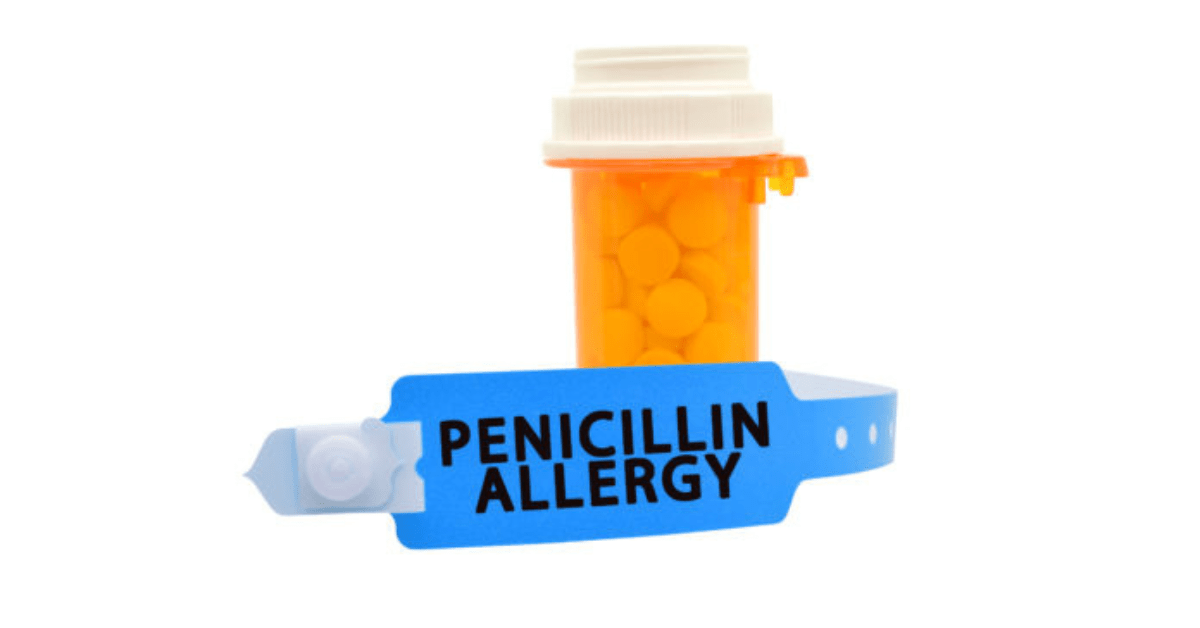Penicillin Allergy – Causes, symptoms and Treatment


penicillin allergy: Penicillin was discovered in 1928 as an antibiotic produced by blue molds, P. chrysogenum and P. rubens. Today, penicillin is produced synthetically as a broad-spectrum antibiotic against infections caused that are caused by gram-positive bacteria like streptococci and staphylococcus. It is used as Penicillin G for intravenous use and Penicillin V for oral consumption.
As an antibiotic, penicillin has been highly useful as a medication against bacterial infections. But, among some individuals, penicillin causes an abnormal reaction of the immune system. When these individuals are administered penicillin, they report mild to life-threatening allergic reactions.
What are Penicillin Allergies?
Since penicillin has been one of the most used antibiotics of modern medicine, it has been preferred by medical practitioners as the primary broad-spectrum antibiotic against bacterial infections. Some people experience allergic reactions to penicillin, as their immune system assumes penicillin itself is an infection/invader. This is known as penicillin allergy.
Penicillin allergies lead to symptoms such as skin rashes and extreme itching and can even cause anaphylaxis which is life threatening . Patients should be aware of their penicillin allergy and inform their doctor while they prescribe medications against infections.
Request an appointment at Apollo Hospitals.
What are the symptoms of penicillin allergy?
Some of the common symptoms are:
- Allergic reactions such as rashes, redness, itching and hives
- Coughing, wheezing and difficulty breathing
- Fever
- Watery eyes, runny nose
- Swelling on the face/neck
Some of the severe symptoms of penicillin allergy are:
Anaphylaxis is a rare, life-threatening allergic reaction which can cause widespread dysfunction of the body systems. The signs and symptoms of anaphylaxis include:
- Diarrhea or vomiting
- Abdominal cramps and nausea
- Tightening of airways and throat, causing troubled breathing
- Seizures
- Weak, rapid pulse
- Dizziness or lightheadedness
- Loss of consciousness
- Drop in blood pressure
Less-common penicillin allergy reactions happen days or weeks after the exposure to this drug and may persist for some time after stopping it. Such conditions include:
- Serum sickness: that may cause swelling, rash, nausea, joint pain and fever
- Drug-induced anemia
- Drug reaction with eosinophilia and systemic symptoms (DRESS): This may cause rash, general swelling, high white blood cell counts, recurrence of dormant hepatitis infection and swollen lymph nodes
- Stevens-Johnson syndrome or toxic epidermal necrolysis that involves severe blistering as well as peeling of the skin
- Inflammation in the kidneys (nephritis) that may result in general swelling, fever, blood in the urine, confusion, including other signs and symptoms
If you experience any of these symptoms, emergency care immediately.
Request an appointment at Apollo Hospitals.
Call 1860-500-1066 to book an appointment.
When do you need to see a doctor?
Awareness of penicillin allergy is essential. Discuss with your doctor if you experience any changes or unexpected developments while taking antibiotics. Penicillin allergy tests in the form of skin tests and challenge tests may help diagnose the condition.
If you observe any signs or symptoms of an allergic reaction, following an antibiotic dose or a penicillin injection, immediately contact your nearest doctor. If you experience any of the severe symptoms, rush to emergency for medical help .
What is the treatment for penicillin allergy?
Depending on the severity of the symptoms of penicillin allergy, your doctor may recommend one of the following treatment modalities:
- For minor allergic reactions, your doctor may prescribe antihistamines (eg. diphenhydramine) to alleviate the symptoms.
- For severe allergic reactions, the doctor may recommend corticosteroid-based medications.
- For penicillin allergies that trigger anaphylaxis, EpiPen or epinephrine drug may be administered to you. This will block the allergic reaction from spreading, increasing the blood pressure .
- Drug desensitization through consumption of increasing dosage of penicillin under medical guidance can also help against penicillin allergies.
Conclusion
Even though the use of penicillin is fairly common, the applicability of penicillin may not be universal. Allergic reactions to penicillin are likely to occur, Statistically, around 0.03% of people may suffer from severe penicillin allergy. In such cases, a doctor prescribes other antibiotics.
It is necessary to take due precautions against penicillin allergies. The risk of severe symptoms, hypersensitivity reactions, anaphylaxis and other disorders are detrimental to the health of a patient.
Frequently Asked Questions (FAQs)
What is a challenge test for checking penicillin allergy?
Under medical supervision, increasing doses of penicillin are administered to a patient, until the patient’s immune system develops penicillin tolerance. If the patient does not observe any allergic symptoms, it can be said that the person does not have a penicillin allergy.
What is a skin test for penicillin allergy?
As the most common diagnostic test for penicillin allergy, a doctor might inject a very small dose of penicillin into your forearm. If an itchy red bump is observed, it indicates penicillin allergy. If not, the doctor increases the dosage and repeats it a couple of times, until it can be successfully ruled out.
What are the drawbacks of penicillin usage?
Some of the drawbacks of using penicillin as an antibiotic are – penicillin allergy and resistance developed by bacteria .
© Copyright 2024. Apollo Hospitals Group. All Rights Reserved.
 +91 8069991061
Book Health Check-up
Book Health Check-up
Book Appointment
Book Appointment
+91 8069991061
Book Health Check-up
Book Health Check-up
Book Appointment
Book Appointment







